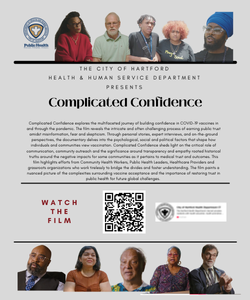By Alexia Leclercq
In the push to create dense, walkable, green cities, upzoning policies—when devoid of affordability—are forcibly displacing communities of color. This practice is happening all over the United States, including my home city of Austin, Texas.
In 2023, Austin City Council Member Leslie Pool introduced the Home Options for Mobility and Equity Initiative (HOME), a land development code change that allows three units on lots that were originally zoned for single-family dwellings. Pointing to research by the libertarian, Koch-funded Mercatus Institute, Pool claims that increasing supply will provide housing for middle-income families and resolve Austin’s housing crisis.
“When I started on Council in January 2015, Austin was still a place for working families,” Pool said during a December 2023 press conference. “After all, the median home price was $238,000, and there were a lot of options in almost every neighborhood.” Now, Pool claimed, the “median home price in Austin is $540,000—well beyond the reach of a middle-income earner whose price point is limited to $350,000.”
From Pool’s perspective, HOME is supposed to change that, making Austin, once again, a place for “young people who came for college or for work and wanted to stay” able to do so.
There was an immediate uproar: More than 40 grassroots organizations, including the NAACP, Austin Mutual Aid, PODER, VOCAL-TX, and Indigenous Movement Crew, led an organizing effort against HOME.
As Rich Heyman, Ph.D., a lecturer at the University of Texas at Austin, notes in a 2023 report commissioned by the City’s Equity Office, upzoning policies lead to market-rate/luxury housing being built in working-class communities of color, where land is cheaper. Then, the increase in property taxes, demolition of existing affordable housing, and other displacement pressure eventually leads to those communities being pushed out.
“Everybody knows that affordability is a big problem in Austin,” Heyman told the Austin Monitor after the December press conference. “And I think that everybody who was at the podium today has all the best intentions, but I think that they are mistaken about what the impact of this initiative is going to be.”
Supporters of HOME and similar policies say they will transform Austin into a more modern, dense, walkable, and sustainable city, but who can afford this version of the city, and who is excluded from this vision?
False Solutions
Housing costs are rising across the U.S., with investors buying up properties to turn them into short-term rentals and renters often being stuck between large rent increases and the elusive dream of ownership.
In particular, as community member Cynthia Vasquez shares, for many urban Black and Brown communities, “The homeowner–to–renter–to–being unhoused pipeline is a lived reality. We are seeing developers make record profits as our communities suffer from displacement.”
In Austin, these issues have deep roots: Like all major U.S. cities, Austin was deeply shaped by systemic racism and redlining. In 1928, the Master Plan, a land development code, pushed Black American and Mexican American communities to East Austin. Since then, East Austin has experienced systemic disinvestment in infrastructure, housing, social services, and environmental protection, leading to land being relatively cheaper compared to central and west Austin.
When activists began kicking polluting industries out of East Austin in the late ’90s and early 2000s, the tides turned. Suddenly, the area became a desired development zone while West Austin became the watershed protection zone, where development was limited in order to protect the water ecosystem. As a result of the increase in market-rate/luxury development, East Austin zip code 78721 is now the fourth-most gentrified neighborhood in the U.S.
For example, the 700-acre award-winning Mueller community, located in central east Austin, is touted for its “sustainable,” “transit-orientated,” “new-urbanist” design. Those residents, however, are whiter and wealthier than surrounding neighborhoods, and among the East Austin community, Mueller is known as just another example of a gentrifying project.
“The Mueller development plays a role in gentrification and the reproduction of social inequalities in Austin,” writes sociologist Sergio A. Cabrera in a 2019 study published in Sociological Spectrum. A 2023 study published in Sociology of Race and Ethnicity documents a rise in racist experiences in East Austin as a result of the Mueller project.
These false solutions aren’t unique to Austin; other cities across the U.S. are also pushing for similar policies. Research based on Minneapolis and New York City demonstrates how upzoning has led to gentrification and displacement. Council Member Mary Black shares that in Raleigh, North Carolina, upzoning has led to a surge in luxury housing. In 2021, rent in Raleigh spiked by 21%, displacing and replacing once-thriving communities of color. “My background is in climate and environmental advocacy, so I know the importance of building dense, walkable cities to act on the climate crisis […] but this means little if low-income communities of color that rely on public transportation are displaced,” Black says.
Community Solutions
The term green gentrification, first coined by professors Alessandro Rigolon and Tim Collin in a 2023 study, describes how projects that may seem to increase sustainability efforts, particularly introducing or renovating parks, can be drivers of gentrification and displacement, thus hurting low-income communities of color.
“By targeting neighborhoods that are already gentrifying, these projects may primarily benefit recently arriving affluent residents, developers, and other business interests,” Collins said in a recent press release. “At the same time, these projects may displace disadvantaged longtime residents, including lower-income renters, who are often [people of color] in cities like [Los Angeles] and Chicago. If these projects displace residents, then this approach ultimately won’t address the health and economic challenges faced in low-income urban communities.”
Rigolon agreed, noting in the press release, “A lot of research frames gentrification as an unintended consequence of a well-intended effort. We argue instead that in many cases, green gentrification is by design.”
In the face of green gentrification, grassroots groups are promoting sustainable development that prioritizes affordability, inclusivity, and the preservation of cultural heritage.
Community Powered ATX, Causa Justa :: Just Cause, CAAAV: Organizing Asian Communities, and other organizations have been developing solutions to the housing affordability crisis that center communities directly impacted, including protecting tenants and public processes, building deeply affordable housing at 30% and 50% median family income, investing in community development corporations, building community land trusts, and using overlays and historic districts to protect Black and Brown neighborhoods.
“We need community-led policies, intentional development of deeply affordable housing, and nonprofit housing models such as land trusts and community development corporations, which have proven to be effective in other cities,” says Misael Ramos, president of the Blackland Community Development Corporation.
By treating housing as a human right instead of an opportunity to profit, we can prioritize the needs of vulnerable communities. In effect, planning and zoning processes must be driven by communities of color who are directly impacted by the affordability crisis and gentrification.
HOME Phase I passed on Dec. 7, 2023, and Phase II, alongside other upzoning policies such as compatibility changes, passed in May 2024. It is history repeating itself: Wealthy, predominantly white investors are taking land from working- and middle-class communities of color. “I feel tremendous pain in my heart walking on my ancestral and contemporary homelands and seeing displacement continue,” says Chiara Do’wal Sehi, a Karankawa artist and educator.
But it’s not too late; in Austin and across the U.S., we can build sustainable and affordable cities without displacing working-class communities of color. Our efforts will only be fruitful if we stop prioritizing investors’ and developers’ interests and begin listening to working-class communities of color.
This article was originally published in YES Magazine.





